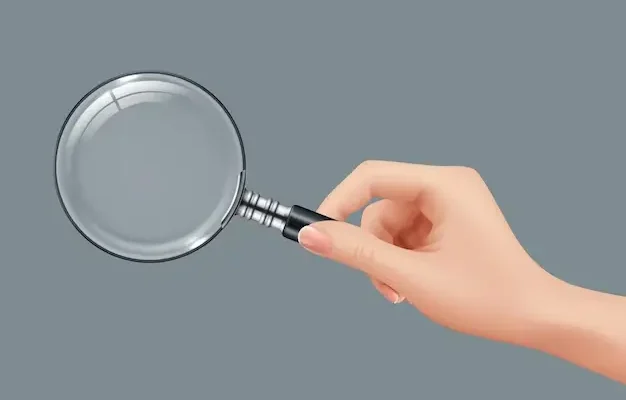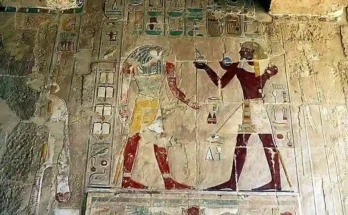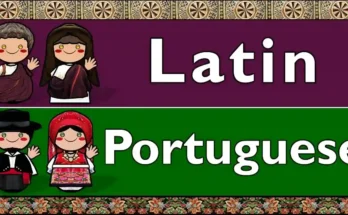In the realm of language and visual expression, certain terms encapsulate unique concepts that evoke a sense of intrigue and wonder. One such term is “Zoomée,” a French word that carries the essence of magnifying, zooming in, and reveling in the intricacies of details. As we embark on a journey to explore the art of Zoomée, we discover a linguistic gem that extends beyond its literal meaning, delving into realms of photography, art, communication, and modern technology.
I. Introduction
The term “Zoomée” finds its roots in the French language, where it serves as the feminine singular past participle of the verb “zoomer,” meaning “to zoom.” This seemingly straightforward word, however, unfolds into a rich tapestry of meanings and applications, particularly when we consider its role in visual media.
Zoomée is not merely a linguistic curiosity; it encapsulates a profound aspect of our interaction with the world, allowing us to scrutinize and appreciate the minutiae that might otherwise escape our notice. In the digital age, where the power to magnify and explore details is at our fingertips, understanding the nuances of Zoomée becomes not just a linguistic endeavor but a key to unlocking the beauty hidden within the folds of everyday scenes and conversations.
In this article, we embark on a comprehensive exploration of Zoomée, navigating through its French origins, its application in visual media such as photography and art, its role as a conceptual tool in discussions, and its integration into modern technological landscapes. We will delve into practical examples, discussing real-world instances where Zoomée transforms the ordinary into the extraordinary. Additionally, we will address the challenges and considerations that accompany the art of zooming in on details, offering a nuanced perspective on the ethical dimensions of this practice.
Join us on this journey as we unravel the layers of Zoomée, discovering how this unassuming term has the power to enhance our perception, communication, and appreciation of the world’s intricate beauty.
Understanding Zoomée in French
In our quest to truly grasp the essence of “Zoomée,” we turn our attention to its linguistic origins in the French language. As a feminine singular past participle of the verb “zoomer,” this term goes beyond a mere conjugation; it encapsulates a vivid expression of the act of zooming in, of bringing focus to a particular point or detail.
Origin and meaning of “Zoomée” in French
The journey begins with the verb “zoomer,” which, in French, signifies the action of zooming in or magnifying. The addition of the feminine singular past participle form, “Zoomée,” introduces a dynamic dimension to the concept. It implies a deliberate choice to emphasize a specific aspect, to draw attention to the finer elements that compose the whole.
Zoomée, at its core, reflects the inherent appreciation within the French language for precision and detail. It embodies a linguistic mechanism through which speakers and creators can convey not just an action but a nuanced approach to observation and analysis.
Relationship to the verb “zoomer” and its implications
To understand Zoomée fully, we must examine its connection to the verb from which it originates. “Zoomer” carries the weight of intentionality, suggesting a purposeful act of zooming in, whether through a camera lens or in a broader sense of focus. The transformation of “zoomer” into “Zoomée” elevates this act to an art form—a deliberate choice to magnify and explore.
In the context of visual media and communication, Zoomée becomes a tool for storytellers, photographers, and artists alike. It serves as a linguistic bridge between the technical action of zooming and the artistic intent of emphasizing specific details. As we unravel the layers of Zoomée, we gain insights not only into the French language’s capacity for nuanced expression but also into the broader human inclination to appreciate the beauty found in meticulous observation.
In the subsequent sections, we will delve into how Zoomée extends beyond its linguistic origins, leaving its imprint on visual media, communication dynamics, and the evolving landscape of modern technology. Join us as we navigate through the intersections of language and visual expression, uncovering the multifaceted nature of Zoomée.
Zoomée in Visual Media
As we continue our exploration of “Zoomée,” we now shift our focus to its prominent role in visual media. From photography to art, Zoomée transcends its linguistic roots, becoming a powerful tool for creators to magnify and highlight the intricate details that often shape our perceptions and evoke emotions.
Application in Photography
Examples of zoomée in photography:
Zoomée in photography involves the intentional magnification of specific details within a frame, transforming an ordinary image into a narrative of nuances. For instance, a photographer might zoomée on the captivating expressions of a subject, capturing the subtle emotions that might go unnoticed in a broader context.
Impact on visual storytelling and aesthetics:
The artful use of Zoomée in photography extends beyond technical proficiency. It serves as a storytelling device, guiding viewers to pay attention to the details that convey a deeper narrative. Whether it’s the texture of a petal, the wrinkles on a face, or the play of light and shadow, Zoomée enhances the visual storytelling experience, inviting viewers to immerse themselves in the richness of the captured moment.
Zoomée in Art and Paintings
How artists use zoomée for emphasis:
In the realm of visual arts, Zoomée becomes a deliberate choice for artists seeking to emphasize specific elements within their creations. By zooming in on a particular aspect of a painting, artists direct the viewer’s gaze, creating focal points that command attention. This intentional emphasis can evoke emotions, tell stories, and offer a unique perspective on the subject matter.
Enhancing the viewer’s experience through details:
Zoomée in art invites viewers to engage in a more intimate exploration of the work. The deliberate emphasis on details encourages contemplation and appreciation of the artist’s skill. Whether it’s a hyper-realistic portrayal or an abstract composition, Zoomée becomes a conduit for a deeper connection between the artwork and its audience.
In the realm of visual media, Zoomée emerges as more than a technical function; it becomes an art form in itself. It empowers photographers and artists to shape narratives, evoke emotions, and invite viewers into a world where details take center stage. Join us in the following sections as we extend our exploration of Zoomée beyond visual media, uncovering its conceptual and technological dimensions.
Zoomée as a Concept
Beyond its linguistic roots and application in visual media, “Zoomée” takes on a broader role as a conceptual tool. In this section, we delve into how the term transcends its literal meaning, becoming a versatile concept applicable in various discussions and narratives.
Beyond Visual Media: Zoomée in Discussions and Narratives
Instances of Zoomée in conversation:
Zoomée extends its influence beyond the visual realm into everyday discussions. When applied metaphorically, it signifies a deliberate focus on specific aspects of a topic or conversation. For example, one might say a meeting “zoomed in” on key challenges, highlighting the intentional exploration of particular details.
Zoomée as an intensification tool:
In narratives, Zoomée serves as an intensification tool, amplifying the significance of certain elements. Whether in literature, film, or storytelling, the concept of Zoomée allows creators to hone in on pivotal moments, emotions, or conflicts, intensifying the impact on the audience.
Practical Examples
Real-world examples of Zoomée’s impact:
Explore real-world instances where Zoomée has played a pivotal role in shaping discussions or narratives. This could range from impactful speeches that focused sharply on key issues to memorable moments in films where the director strategically zoomed in to heighten tension or emphasize a character’s emotions.
Case studies in communication:
Zoomée as a concept is not confined to a specific medium. It finds relevance in communication strategies, public speaking, and even interpersonal interactions. Examine case studies where a deliberate focus on specific details—whether in a marketing campaign or a persuasive argument—led to a more profound impact.
As we navigate through Zoomée as a conceptual tool, it becomes evident that its application extends far beyond the visual representation of magnification. It becomes a lens through which we intentionally focus on and intensify elements of our narratives and discussions. Join us in the following sections as we explore the practical implications of Zoomée, from its integration into modern technology to its challenges and ethical considerations.
Practical Examples of Zoomée
In our exploration of Zoomée, we now turn our attention to practical examples that illustrate how this concept manifests in various real-world scenarios. From photography to technology and beyond, Zoomée proves to be a dynamic tool with applications that extend far beyond the literal act of zooming in.
Real-World Examples of Zoomée’s Impact
Photography that tells a story:
Consider iconic photographs where the photographer strategically used Zoomée to convey a compelling narrative. Perhaps it’s a war photographer zooming in on the eyes of a child amid chaos, emphasizing the human impact of conflict. These instances showcase how intentional magnification can turn a photograph into a powerful storytelling medium.
Film and cinematography:
In cinema, directors often leverage Zoomée to draw attention to critical details that shape the storyline. For example, a close-up shot of a character’s expression can evoke empathy or intensify the emotional resonance of a scene. The deliberate use of Zoomée in film enhances the audience’s connection with the characters and the unfolding narrative.
Case Studies in Communication
Marketing campaigns that zoom in on details:
Successful marketing campaigns often employ Zoomée as a metaphorical device. For instance, an advertisement for a luxury product might zoom in on the craftsmanship, inviting consumers to appreciate the intricate details that set the product apart. This intentional focus can elevate the perceived value and uniqueness of the offering.
Persuasive speeches that emphasize key points:
In public speaking, Zoomée becomes a rhetorical tool to underscore key messages. A memorable speech might strategically zoom in on specific aspects of an argument, driving home the importance of particular ideas. This intentional emphasis helps the audience connect with and remember crucial points.
As we explore these practical examples, it becomes evident that Zoomée is not confined to a singular domain. Its impact is felt across diverse fields, from visual arts to marketing and communication. Join us in the subsequent sections as we navigate through the role of Zoomée in modern technology and delve into the potential challenges and ethical considerations associated with this concept.
Zoomée in Modern Technology
In the digital age, the concept of Zoomée finds a natural home in modern technology, shaping our interactions with digital platforms, applications, and devices. From video conferencing tools to digital photography, Zoomée plays a pivotal role in enhancing our experiences and capabilities.
Role of Zoomée in Digital Platforms and Applications
Video Conferencing and Virtual Communication:
The rise of virtual communication platforms has brought Zoomée into our daily lives in a new and literal sense. Video conferencing tools, exemplified by platforms like Zoom, allow users to zoom in on facial expressions and details during virtual meetings. This capability enhances the nuances of remote communication, fostering a sense of connection despite physical distances.
Digital Photography and Editing Software:
Digital photography has undergone a transformative evolution with the incorporation of Zoomée features in cameras and editing software. Photographers can now digitally zoom in on specific elements during post-production, refining details and optimizing the visual impact of their images. This technological integration expands the creative possibilities for photographers, enabling them to fine-tune their compositions.
How Technological Advancements Have Influenced the Concept of Zoomée
Smartphones and Mobile Devices:
The ubiquity of smartphones has democratized the act of zooming in on details. Advanced camera technologies in smartphones allow users to effortlessly zoom in on subjects, capturing intricate details with a simple pinch gesture. This accessibility has empowered individuals to become creators, exploring and sharing their perspectives with a global audience.
Augmented Reality (AR) and Virtual Reality (VR):
Augmented and virtual reality technologies provide immersive experiences that go beyond traditional visual media. Zoomée in AR and VR allows users to focus on specific elements within a digital environment, enhancing the sense of presence and engagement. These technologies redefine how we perceive and interact with digital content, emphasizing the importance of intentional focus in virtual spaces.
As we embrace Zoomée in the context of modern technology, it becomes clear that this concept is not only a linguistic and artistic tool but also a dynamic force shaping the way we communicate, create, and experience the digital world. Join us in the final sections as we explore the challenges and ethical considerations associated with the art of zooming in on details.
Challenges and Considerations
As we delve into the art and application of Zoomée, it’s essential to acknowledge the challenges and considerations associated with this intentional act of magnification. While Zoomée enhances our ability to appreciate details, it also presents a set of complexities that warrant examination.
Potential Drawbacks or Misuses of Zoomée
Loss of Context:
Zooming in on specific details can sometimes lead to a loss of context. In visual media, a narrow focus on isolated elements might omit the broader narrative or surroundings, potentially distorting the intended message.
Image Quality and Distortion:
The act of Zoomée, particularly in digital platforms, may encounter challenges related to image quality and distortion. Enlarging images beyond their original resolution can result in pixelation and a reduction in overall visual fidelity.
Ethical Considerations in Zooming In on Details
Selective Emphasis and Bias:
Zoomée allows creators to selectively emphasize certain details, raising ethical questions about the potential introduction of bias. In journalistic contexts, for instance, intentional magnification of specific elements could influence the audience’s perception of events.
Invasion of Privacy:
In photography and digital media, the intentional zooming in on individuals or private spaces raises concerns about privacy. Striking a balance between capturing compelling details and respecting personal boundaries is a crucial ethical consideration.
Balancing Aesthetic Appeal with Authenticity
Striking a Balance in Visual Arts:
In art and photography, artists grapple with the challenge of balancing aesthetic appeal with authenticity. While Zoomée can enhance the visual impact, it requires a thoughtful approach to ensure that the magnification aligns with the artist’s intent.
Maintaining Transparency:
Communicating the use of Zoomée in visual media is crucial to maintaining transparency. Whether in journalism or artistic expression, creators should be transparent about the intentional magnification to foster trust with their audience.
As we navigate through the challenges and ethical considerations associated with Zoomée, it becomes evident that this concept, like any powerful tool, requires a responsible and thoughtful approach. Join us in the concluding sections as we recap the significance of Zoomée and offer closing thoughts on its multifaceted nature.
Zoomée as a Noun
Beyond its role as a verb or a conceptual tool, “Zoomée” takes on a distinct identity as a noun. In this section, we explore how the term transforms into a tangible entity, referring to a magnified or enlarged image that captures and highlights specific details.
Exploring the Use of “Zoomée” as a Noun
Referring to Enlarged Images:
As a noun, “Zoomée” denotes an image that has undergone a deliberate process of enlargement or magnification. It could be a photograph, artwork, or visual representation that has been transformed to highlight intricate details. For instance, one might encounter a “Zoomée” of a historical document, allowing viewers to scrutinize the fine print and gain a deeper understanding of its contents.
Application in Various Visual Media:
The term extends beyond photography to encompass diverse visual media. A “Zoomée” might appear in a magazine article, presenting readers with an enlarged portion of a captivating image. This application serves to draw attention to specific elements within the visual landscape, inviting viewers to appreciate the finer nuances.
Instances where “Zoomée” Refers to an Enlarged Image
In Art and Exhibitions:
Art galleries and exhibitions may feature “Zoomées” of particular artworks, offering visitors an up-close view of details that might be missed from a distance. This intentional magnification enhances the viewer’s experience, allowing for a deeper engagement with the artist’s technique and expression.
Digital Platforms and Online Content:
In the digital realm, “Zoomée” has become a common term on online platforms where images are shared and discussed. Users might share or comment on a “Zoomée” of a stunning landscape, architectural detail, or a noteworthy moment captured in a photograph. The term serves as a shorthand for the act of zooming in to appreciate the intricacies of visual content.
As we navigate through the noun form of “Zoomée,” it becomes evident that the term is not only a linguistic construct but also a practical descriptor for visual content that undergoes intentional magnification. Join us in the concluding sections as we recap the significance of Zoomée and explore its broader implications in our perception of details.
Conclusion:
In our exploration of Zoomée, we’ve embarked on a journey that transcends the literal act of zooming in and magnifying details. From its linguistic origins in French to its diverse applications in visual media, conversations, and modern technology, Zoomée emerges as a concept that enriches our perception of the world.
We’ve witnessed how Zoomée serves as more than just a technical function; it is an art form, a storytelling device, and a dynamic tool that influences our communication and creativity. The intentional magnification of details, whether in photography, art, or virtual communication, invites us to appreciate the intricacies that often escape casual observation.
As a noun, “Zoomée” transforms into a tangible entity—an enlarged image that captures and highlights specific details. It finds its place in art galleries, digital platforms, and various visual media, becoming a descriptor for intentional magnification.
However, with every tool comes a set of challenges and considerations. We’ve explored the potential drawbacks and misuses of Zoomée, from the loss of context to ethical considerations related to privacy and bias. Striking a balance between aesthetic appeal and authenticity is a constant challenge, requiring creators to navigate the complexities with care and transparency.
In the digital age, Zoomée has seamlessly integrated into modern technology, shaping our virtual interactions and redefining how we experience digital content. From video conferencing tools to the capabilities of smartphones, Zoomée has become a ubiquitous part of our visual landscape.
As we conclude our exploration, it’s clear that Zoomée is a multifaceted concept—one that invites us to zoom in, not just with our cameras and lenses but with our minds and perspectives. It challenges us to find beauty in the details, to tell richer stories, and to communicate with intentionality.
In the grand tapestry of language, art, and technology, Zoomée stands as a testament to our innate desire to explore, magnify, and appreciate the world’s intricate beauty. As we continue to zoom in on details, may we do so with a discerning eye, a creative spirit, and a deep appreciation for the richness that lies within every intentional magnification.



